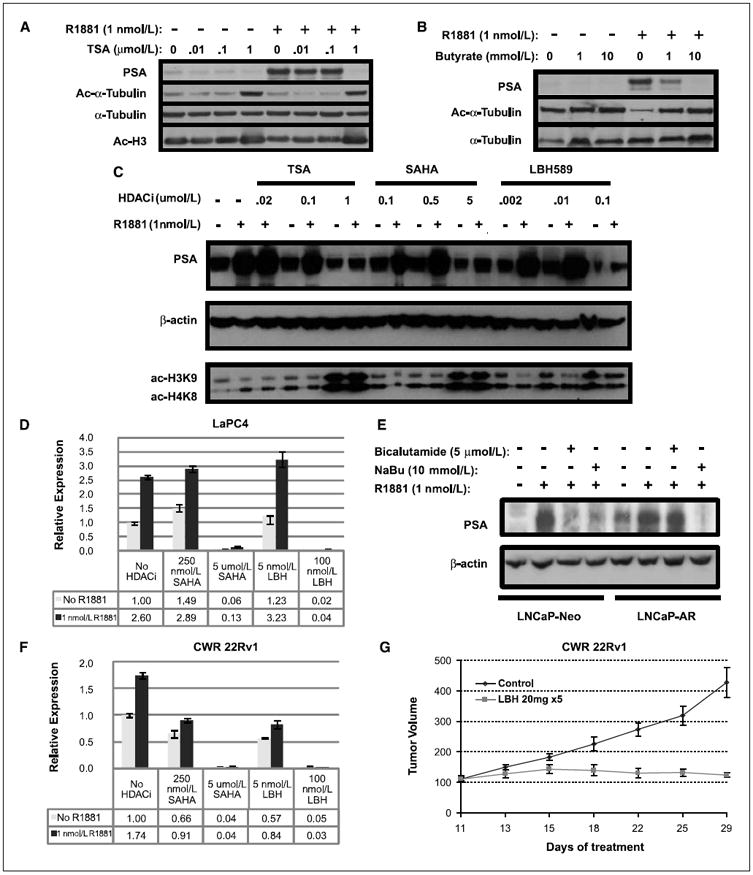Figure 1.

HDAC inhibition decreases AR activity in hormone-sensitive and hormone-refractory prostate cancer. A-C, LNCaP cells were starved of androgen for 5 d in 1% CS-FBS and then stimulated with or without 1.0 nmol/L R1881 in the presence of increasing doses of TSA (A), sodium butyrate (B), or TSA, SAHA, and LBH589 (C). After 24 h, lysates were blotted for PSA as indicator of AR function, acetyl-tubulin, acetyl-H3, or acetyl-H4 as markers of HDAC inhibition, and α-tubulin or actin as loading control. D, LaPC4 cells starved of androgen were treated with or without 1 nmol/L R1881 in the presence of HDAC inhibitors, as indicated for 16 h. Quantitative RT-PCR against PSA was normalized using GAPDH. E, LNCaP-Neo and LNCaP-AR cells were starved and treated with 1 nmol/L R1881 in the presence or absence of 10 mmol/L sodium butyrate or 5 μmol/L bicalutamide for 48 h. They were then lysed and immunoblotted for PSA and β-actin. F, RT-PCR of PSA of CWR22Rv1 cells performed as in D. G, CWR22Rv1 cells were mixed with Matrigel and inoculated s.c. in the right flank of four 6-wk-old mice. When tumors reached a minimum diameter of 5 mm, mice (n = 5–10 per treatment group) were randomly assigned to treatment with LBH589 (20 mg/kg) by i.p. injection. Twice a week, mice were weighed and tumor volumes were measured with vernier calipers.
